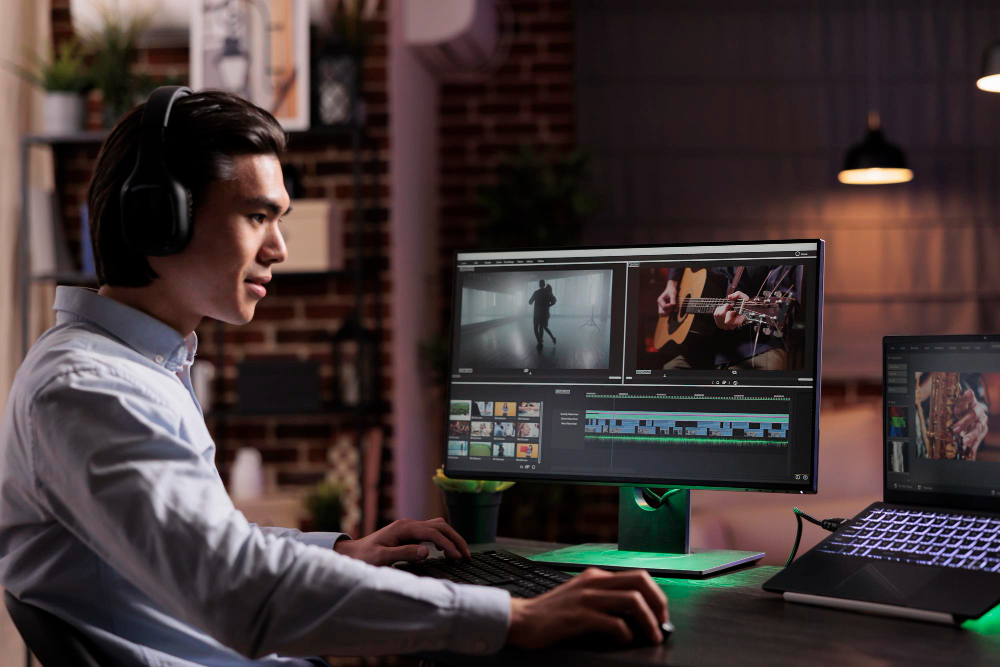Creating cinematic video content is no longer just the domain of Hollywood. Independent filmmakers, YouTubers, content creators, and even ambitious marketers now pursue cinematic aesthetics with increasing passion. But raw footage alone won’t get you there. To evoke deep emotion, set a compelling tone, and captivate viewers from the first frame to the last, you need the right tools—specifically, the best software for cinematic video editing.
This blog explores the top 10 video editing software options that empower creators to craft stunning cinematic visuals. Each tool is evaluated not just on features, but also on how well it supports creativity, narrative structure, color grading, sound design, and that elusive quality—cinematic feel.
What Makes Video Editing Cinematic?
Before diving into the software, it’s important to understand what we mean by “cinematic.” It goes beyond fancy transitions and filters. True cinematic video editing is about storytelling. It involves tight pacing, meaningful cuts, intentional framing, color consistency, and immersive audio. The software you choose must help you build emotion, tension, or wonder—whatever the scene calls for.
Here’s where the controversy starts: many creators mistake complexity for quality. Just because a tool has 1,000 features doesn’t mean it’s right for your cinematic project. Simplicity, speed, and user experience can be far more valuable than technical bloat.
List of 10 Best Software for Cinematic Video Editing
1) DaVinci Resolve Studio
DaVinci Resolve Studio has become the gold standard in the cinematic world. Used by professional colorists and editors in major film productions, it combines powerful editing tools with Hollywood-grade color grading capabilities. Its Fusion module allows advanced VFX work, while Fairlight provides a full suite for audio post-production.
What makes DaVinci truly cinematic is its meticulous color correction workflow and collaborative environment. It’s a full post-production suite in one, and surprisingly, the free version is incredibly capable.
2) Adobe Premiere Pro
Adobe Premiere Pro remains a favorite for many editors seeking professional cinematic results. Integrated with Adobe’s Creative Cloud ecosystem, it allows seamless transitions between After Effects, Audition, and Photoshop. The Lumetri Color panel gives editors precise control over tone, contrast, and saturation—essentials in cinematic visuals.
While its learning curve can be steep, Premiere Pro’s customization options and plugin support make it ideal for seasoned editors.
3) Final Cut Pro
Apple’s Final Cut Pro is widely respected for its magnetic timeline, clean interface, and efficient rendering performance. It is optimized for Mac, which means buttery-smooth performance even when handling high-resolution video files. Many indie filmmakers and YouTubers prefer Final Cut for its speed and cinematic-friendly features like advanced color grading, HDR support, and ProRes codecs.
Despite being Mac-only, Final Cut Pro holds its own in the cinematic editing world thanks to its intuitive tools and polished output.
4) Avid Media Composer
Avid Media Composer is the OG of professional video editing software. Trusted by Hollywood for decades, it’s built for long-form storytelling. From multi-camera editing to advanced media management, Avid is designed for big projects.
Its complex interface can be a barrier for beginners, but for those working on serious cinematic projects, the precision and robustness of Avid Media Composer are unmatched.
5) HitFilm Pro
HitFilm Pro brings together professional editing, VFX, and compositing in one platform. It’s ideal for cinematic creators who want to mix video with special effects like explosions, sci-fi elements, or fantasy overlays. You don’t need to bounce between software—HitFilm lets you do it all.
Its intuitive UI, robust timeline, and in-depth color grading tools make it a powerful alternative to bigger names—especially for creators on a budget.
6) VEGAS Pro
VEGAS Pro has evolved from its roots as Sony Vegas into a formidable editing suite. With real-time timeline editing, GPU acceleration, and native HDR support, it appeals to cinematic editors who prioritize efficiency without sacrificing quality.
Its standout feature is AI-assisted editing, which streamlines complex workflows such as scene detection, noise reduction, and smart cropping. This can be a huge asset in cinematic storytelling, where every second counts.
7) Lightworks Pro
Lightworks is another veteran in the cinematic editing field. Known for its reliability and speed, it’s been used in the post-production of movies like Pulp Fiction and The Wolf of Wall Street. The Pro version unlocks higher resolution exports and more advanced editing features.
Its editing approach is geared toward professionals, but even semi-pros can quickly learn the basics and start creating cinematic masterpieces with its robust toolkit.
8) EDIUS X Pro
EDIUS X Pro from Grass Valley may not be as flashy as some competitors, but it delivers professional-grade results with unrivaled stability. It supports almost every format natively and offers real-time editing without rendering.
Its strength lies in fast turnaround without sacrificing quality—a feature ideal for cinematic editors who need speed and precision. While not the most intuitive for beginners, seasoned editors will appreciate its efficiency.
9) Pinnacle Studio Ultimate
Pinnacle Studio Ultimate offers surprising cinematic depth for its price point. With enhanced motion tracking, split-screen video, and wide-format support (including 360-degree editing), it’s ideal for experimental filmmakers and YouTubers looking to up their game.
While not quite on par with DaVinci or Premiere in terms of raw power, it provides excellent value and a lower barrier to entry.
10) Magix Video Pro X
Magix Video Pro X is a lesser-known but incredibly powerful tool aimed at professional editors. It offers precise color correction, deep 3D editing support, and intuitive motion tracking. Its workflow customization allows editors to adapt the platform to their unique cinematic needs.
Its interface can be a bit clunky compared to Final Cut or Premiere, but the results speak for themselves. Especially for editors who value flexibility, Magix Video Pro X delivers.
Are you Choosing the Right Cinematic Tool?
Here’s a controversial take: most aspiring cinematic creators are using the wrong software. They’re overwhelmed by marketing claims and forget to consider their actual needs. Are you editing a short film, a documentary, a cinematic vlog, or a full-length feature? Your goals should dictate your tools—not the other way around.
A big-budget platform won’t help if you don’t understand pacing, rhythm, or visual storytelling. On the flip side, even simple software can produce stunning cinematic results in the hands of a skilled editor.
Final Word on Crafting Cinematic Excellence
Your choice of software for cinematic video editing can make or break your project—but it’s just one part of the equation. Mastery comes from practice, experimentation, and understanding the language of cinema. Whether you go with DaVinci for its grading brilliance, Premiere for its ecosystem, or HitFilm for its VFX edge, choose the tool that aligns with your creative process. Remember: it’s not about what software has the most features—it’s about what helps you tell your story best. True cinematic editing is an art. And like any art, it’s less about the brush and more about the artist.
Interesting Reads
WordPress Plugins for Currency Conversion





